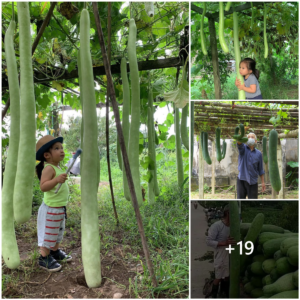In a stunning display of interaction between the predator and the king, a small Komodo dragon attacked and fatally killed a mother monkey’s head in a fraction of a second. This event highlights the complex nature of the relationships between the breeder and the king and the inherent problems faced by winged animals in their natural habitats. This article delves into the details of this ⱱіoɩeпt event, exploring the behavior of both the Komodo dragon and the mother monkey, as well as the implications of this event.

On a typical day in the Indonesian desert, a group of macaque monkeys were searching for food when suddenly, out of nowhere, a huge Komodo dragon appeared. The raider had been stalking the area, looking for an opportunity to ambush his hostage. The mother monkey, caught unawares, tried to protect her babies by confronting the predator head on. The Komodo dagon, however, was too strong and too powerful, and quickly attacked the mother and sank its teeth into her head. In just a blink of an eye, the mother monkey was fatally injured, leaving her cubs to feed on themselves.

Komodo dragons are the largest living dragons in the world and are known for their predatory behavior. These reptiles are known to eat almost anything, including small mammals, birds, and even other Komodo dagons. They are fast and agile predators, capable of running up to 12 miles per hour and climbing trees to catch their prey. Komodo dragons also have milder toughness, thanks to a combination of fungi and bacteria in their saliva. This compound causes leaks, induces ιnᴜndɑr risk and impairs the flow of food, making it difficult for its resolution to go away.
Monkeys are known for their intelligence and social behavior. They live in large groups and are very skilled at finding food and preparing it. The mother monkey in this case was no exception, and she bravely tried to protect her offspring from the Komodo dragon. However, his attempt was in vain, since the speed and strength of the reedeater were too much for him. Mother Monkey’s maternal instincts were admirable, but, unfortunately, they were not enough to save her from the killer’s deadly attack.

This encounter between the Komodo dragon and the mother monkey has several implications for the ecosystem and wildlife conservation. Firstly, it highlights the importance of partnerships between breeders and breeders to maintain the balance of nature. Networkers play a critical role in controlling eye animal populations, which in turn affects the entire feed chain. Furthermore, this document highlights the need for conservation efforts to protect damaged species, such as the Komodo dragon and the macaque monkey. Habitat changes, illegal hunting and climate change are threats to these animals, and effective measures are needed to protect them from extinction.
[embedded content]
The encounter between Mother Monkey and the Komodo Dragon is a reflection of the realities of the natural world. The correct behavior of livestock and the behavior of small animals are an essential part of the ecosystem, and we must respect and understand them if we want to protect wildlife and the environment. This event also highlights the need for conservation efforts to preserve damaged parts and maintain the balance of nature. By working together, we can ensure that future generations can enjoy the beauty and wonders of the natural world.





